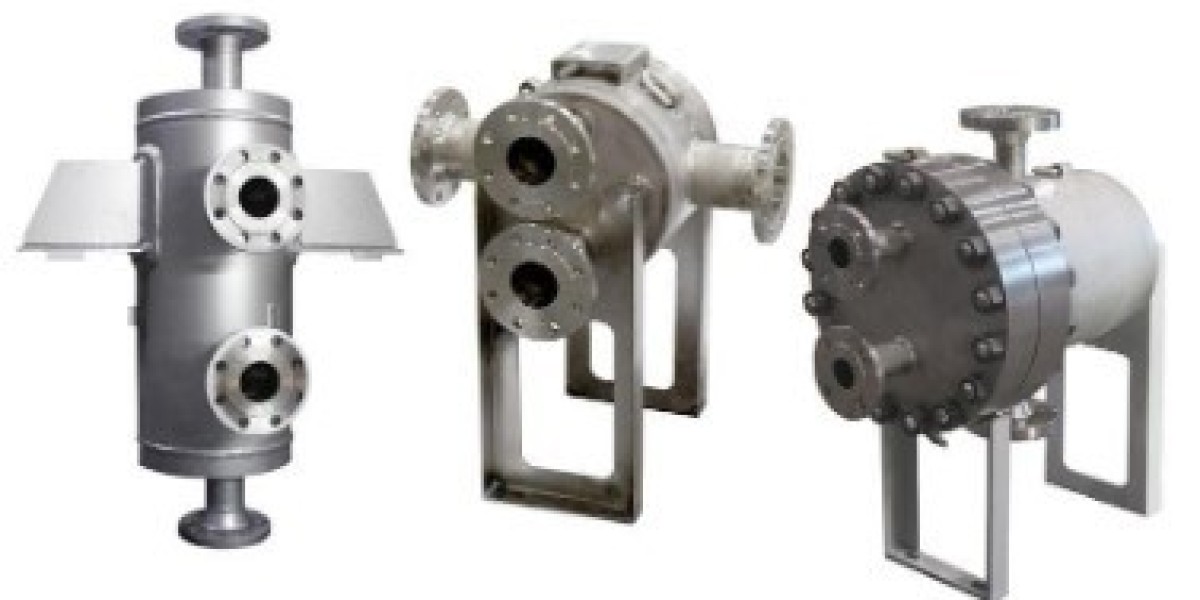In the world of industrial applications, efficient heat transfer systems play a pivotal role in optimizing energy usage and ensuring seamless operations. Among the diverse range of heat exchangers, the Plate and Shell Heat Exchanger stands out for its superior performance, compact design, and versatility. This innovative equipment has become indispensable across various industries such as power generation, chemical processing, HVAC systems, and more.
What is a Plate and Shell Heat Exchanger?
A Plate and Shell Heat Exchanger is a hybrid heat exchanger that combines the benefits of plate heat exchangers and shell-and-tube heat exchangers. It features a cylindrical shell that houses a series of corrugated plates. The design allows for efficient heat transfer between two fluids, even under high-pressure and high-temperature conditions.
This unique combination provides the compactness and efficiency of plate heat exchangers while maintaining the robustness of shell-and-tube systems. Its adaptability and energy efficiency make it an ideal choice for precision equipment requiring stringent thermal management.
Key Features of Plate and Shell Heat Exchangers
- Compact Design
The compact structure of a Plate and Shell Heat Exchanger reduces space requirements significantly, making it a preferred choice for industries with limited installation areas. The smaller footprint also contributes to reduced material costs. - High Thermal Efficiency
With corrugated plates that maximize surface area, these exchangers offer superior thermal performance. They ensure optimal heat transfer even with minimal temperature differences between fluids. - Robust Construction
The durable shell and robust plate design enable the system to withstand extreme operational conditions, such as high pressures and temperatures. This reliability is crucial for precision equipment in critical applications. - Low Fouling Rates
The smooth surfaces of the plates reduce the risk of fouling, ensuring consistent performance and minimizing maintenance needs over time. - Versatility
These exchangers can handle a wide range of fluids, including gases, liquids, and multiphase mixtures, making them highly versatile for various industrial applications. - Ease of Maintenance
Modular construction allows for easy disassembly and cleaning. This feature is particularly important for industries where regular maintenance is necessary to ensure optimal performance.
Applications of Plate and Shell Heat Exchangers in Precision Equipment
1. Power Generation
In power plants, Plate and Shell Heat Exchangers are used for condensing steam, cooling turbine oils, and managing heat recovery systems. Their compact size and high efficiency are crucial in optimizing energy usage.
2. Chemical Processing
Chemical processes often involve handling corrosive and high-temperature fluids. The durable construction and thermal efficiency of these heat exchangers make them ideal for use in reactors, distillation columns, and other critical chemical equipment.
3. HVAC Systems
Plate and Shell Heat Exchangers ensure energy-efficient cooling and heating in heating, ventilation, and air conditioning systems. Their compact design suits modern buildings and industrial facilities with limited space.
4. Oil and Gas Industry
The oil and gas sector relies on heat exchangers for processes such as crude oil refining, natural gas liquefaction, and pipeline heating. The robust and efficient Plate and Shell Heat Exchanger meets these demands effectively.
5. Food and Beverage Industry
In food processing, maintaining precise temperatures is critical for product quality and safety. These heat exchangers are widely used for pasteurization, sterilization, and temperature-sensitive mixing operations.
Advantages of Plate and Shell Heat Exchangers Over Conventional Systems
- Compactness: Unlike traditional shell-and-tube exchangers, Plate and Shell Heat Exchangers require less space, making them suitable for compact industrial setups.
- Energy Efficiency: The high thermal performance reduces energy consumption, lowering operational costs.
- Cost-Effectiveness: Reduced maintenance and installation costs make them an economically viable choice in the long run.
- Environmental Sustainability: Enhanced energy efficiency contributes to reduced carbon emissions, aligning with global sustainability goals.
Factors to Consider When Choosing a Plate and Shell Heat Exchanger
1. Operational Conditions
The pressure and temperature requirements of your application dictate the material and design of the heat exchanger. Plate and Shell Heat Exchangers are highly customizable to meet these needs.
2. Fluid Properties
The type and viscosity of fluids being processed influence the choice of plate material and corrugation patterns to ensure efficient heat transfer and durability.
3. Maintenance Requirements
Consider the ease of cleaning and replacement of components, especially for applications involving high-fouling fluids or environments requiring frequent maintenance.
4. Space Availability
Compact designs like the Plate and Shell Heat Exchanger are perfect for facilities with limited space, providing efficient performance without compromising on installation feasibility.
Innovations in Plate and Shell Heat Exchanger Technology
Ongoing advancements in materials science and manufacturing processes have further enhanced the performance and reliability of Plate and Shell Heat Exchangers. Some noteworthy innovations include:
- Advanced Materials: High-performance alloys and corrosion-resistant materials extend the lifespan of these exchangers in harsh environments.
- Improved Plate Designs: Enhanced plate corrugations maximize turbulence and heat transfer rates, improving overall efficiency.
- Smart Monitoring Systems: Integration with IoT-enabled sensors allows real-time monitoring of performance metrics, ensuring proactive maintenance and operational optimization.
- Modular Configurations: Customizable modular designs enable scalable solutions for industries with dynamic operational demands.
Why Choose Plate and Shell Heat Exchangers for Precision Equipment?
The demands of precision equipment necessitate systems that offer reliability, efficiency, and adaptability. Plate and Shell Heat Exchangers fulfill these criteria, providing:
- High operational efficiency to ensure minimal energy wastage.
- Robust construction for durability under extreme conditions.
- Adaptability across diverse industrial applications, from power plants to chemical processing units.
Their advanced design and superior performance make them a valuable asset in optimizing processes and reducing costs.
Conclusion
The Plate and Shell Heat Exchanger has revolutionized heat transfer technology, offering unparalleled efficiency, durability, and versatility. Its innovative design bridges the gap between compactness and robust performance, making it indispensable for precision equipment across industries.
As industries continue to evolve, the demand for efficient and reliable heat exchange solutions will grow. The Plate and Shell Heat Exchanger, with its proven track record and potential for further innovation, is poised to remain at the forefront of this technological landscape, ensuring optimal performance and sustainability in industrial operations.


